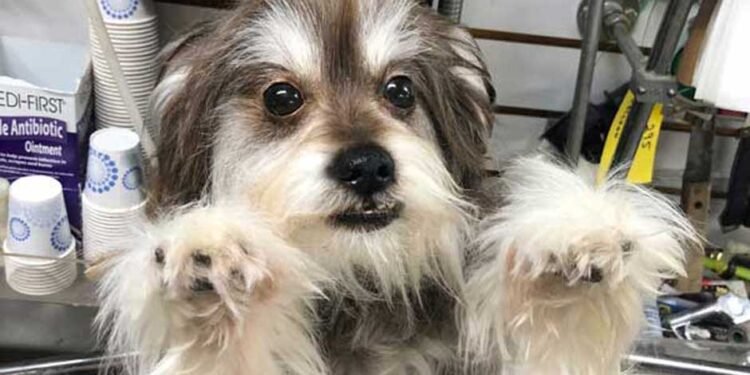Freeze-dried pet preservation is a unique and compassionate method of memorializing beloved pets after they pass away. Unlike traditional taxidermy, which involves mounting the skin over a form, freeze-dried preservation maintains the animal’s natural appearance by retaining the body in its original state. This technique allows pet owners to honor their companions in a lifelike manner, preserving the pet’s unique features and personality traits.
This blog will explore the science behind freeze-dried preservation, its advantages, and how it differs from other methods like traditional taxidermy. We’ll also discuss what to consider when choosing this option for your pet and provide insight into how freeze-dried taxidermy works.
The Science Behind Freeze-Dried Pet Preservation
At its core, freeze-dried preservation uses advanced dehydration technology to remove all moisture from the pet’s body without compromising its shape or appearance. Here’s how the process works:
- Preparation: The pet’s body is carefully cleaned, groomed, and posed in the desired position. Specialists often consult with the pet owner to determine how the animal should look, ensuring it reflects the pet’s personality.
- Freezing: Once prepared, the pet is placed in a freeze-dryer, a machine that creates a controlled environment with sub-zero temperatures.
- Vacuum Drying: The freeze-dryer lowers the pressure, causing water in the body to sublimate (transition directly from ice to vapor). This step removes moisture without causing distortion or damage.
- Final Touches: After the preservation process is complete, any necessary grooming or touch-ups are performed to ensure the pet looks as lifelike as possible.
This process can take weeks or even months, depending on the size of the pet and the desired level of detail.
How Freeze-Dried Taxidermy Differs from Traditional Taxidermy
Freeze-dried preservation is often confused with traditional taxidermy, but the two methods are quite different. Here’s a breakdown of the key distinctions:
| Aspect | Freeze-Dried Preservation | Traditional Taxidermy |
| Process | Uses dehydration to preserve the entire body | Removes the skin, which is then mounted on a sculpted form |
| Appearance | Retains the pet’s original body and features | Recreates the pet’s appearance with artificial components |
| Lifelike Qualities | Highly realistic; retains the pet’s natural structure | Can appear less lifelike depending on the skill of the taxidermist |
| Suitability | Ideal for small to medium-sized pets | Commonly used for larger animals like deer or birds |
Freeze-drying preserves the pet exactly as it was, making it a preferred choice for owners who want a truly authentic representation of their furry friend.
Advantages of Freeze-Dried Taxidermy
Freeze-dried taxidermy offers several benefits, making it an increasingly popular choice for pet preservation:
- Natural Appearance: The process preserves the pet’s unique physical traits, from their fur texture to their paw placement.
- Emotional Connection: Freeze-dried pets maintain a lifelike presence, helping owners feel closer to their cherished companions.
- Longevity: When properly cared for, a freeze-dried pet can last for decades, serving as a long-lasting tribute.
- Customizable Poses: Owners can request specific poses, such as a sleeping position or a seated stance, to capture the pet’s personality.
- Eco-Friendly Option: Freeze-drying involves fewer chemicals than traditional taxidermy, making it a more environmentally conscious choice.
Considerations for Freeze-Dried Pet Preservation
While freeze-dried preservation has many benefits, it’s important to weigh certain factors before deciding if this method is right for you:
- Cost: Freeze-dried taxidermy can be more expensive than traditional options due to the time-intensive process and specialized equipment.
- Time: The preservation process takes time, often several months, which may require patience.
- Size Limitations: Freeze-drying is most suitable for small to medium-sized pets, such as cats, dogs, rabbits, birds, and reptiles. Preserving larger animals may be more challenging using this method.
- Emotional Impact: Seeing your pet in a lifelike state after their passing can be comforting for some but challenging for others. Consider your emotional response carefully.
Freeze-Dried Preservation for Different Pets
The versatility of freeze-dried taxidermy allows it to be applied to various types of pets. Here are some examples:
- Dogs and Cats: Preserve their familiar sleeping or sitting poses to reflect their personality.
- Birds: Freeze-drying captures delicate features like feathers and beaks, maintaining their vibrant appearance.
- Small Animals: Rabbits, hamsters, and guinea pigs can be preserved in natural positions that highlight their charm.
- Reptiles and Amphibians: Lizards, turtles, and frogs benefit from freeze-drying because their unique textures and colors are retained.
The Emotional Significance of Freeze-Dried Taxidermy
For many pet owners, preserving a pet is more than a physical memorial—it’s an emotional journey. Freeze-dried taxidermy offers a way to keep the memory of a beloved pet alive while providing comfort during the grieving process. The preservation’s lifelike quality can help pet owners feel a continued connection to their companion, making it easier to cope with their loss.
Caring for a Freeze-Dried Pet
To ensure your freeze-dried pet remains in excellent condition, proper care is essential. Follow these tips:
- Display Environment: To prevent fading or damage, keep the preserved pet in a dry, cool location away from direct sunlight.
- Regular Cleaning: Dust gently with a soft brush to maintain the pet’s appearance. Avoid using water or cleaning products.
- Protective Covering: Consider placing the pet in a glass display case to shield it from dust and environmental factors.
- Pest Prevention: Ensure the display area is free from pests, such as moths or beetles, which could harm the preserved pet.
Choosing a Freeze-Dried Preservation Specialist
Selecting the right professional is crucial to achieving a high-quality result. When researching a specialist, look for:
- Experience: Check how long they’ve been offering freeze-dried taxidermy services.
- Portfolio: Review examples of their work to assess the quality and attention to detail.
- Customer Reviews: Read testimonials from previous clients to gauge satisfaction levels.
- Consultation Services: A good specialist will discuss your preferences and provide guidance on poses and care.
The Future of Freeze-Dried Taxidermy
As technology advances, freeze-dried pet preservation continues to gain popularity. Improved techniques and equipment are making the process more accessible and efficient. Furthermore, many companies now offer tailored packages, including custom poses and even memorial plaques, to create a personalized experience for pet owners.
Is Freeze-Dried Taxidermy Right for You?
Freeze-dried taxidermy is a deeply personal choice. It’s ideal for pet owners who want to honor their companions with a realistic and lasting tribute. Whether you’re looking for a way to preserve your pet’s unique traits or seeking comfort during the grieving process, freeze-dried preservation provides an option that blends art, science, and compassion.
A Timeless Tribute to Your Pet
Freeze-dried pet preservation offers a heartfelt way to keep your beloved companion close, honoring their memory with lifelike detail and care. This method allows pet owners to create a lasting tribute that captures the unique personality and spirit of their pet.
If you’re considering freeze-dried taxidermy, research professionals who specialize in this art form. This will ensure your pet’s legacy is preserved with the dignity it deserves.
Whether it’s a faithful dog, a graceful bird, or a cherished rabbit, freeze-dried taxidermy ensures that your pet’s memory lives on in a tangible and meaningful way.












